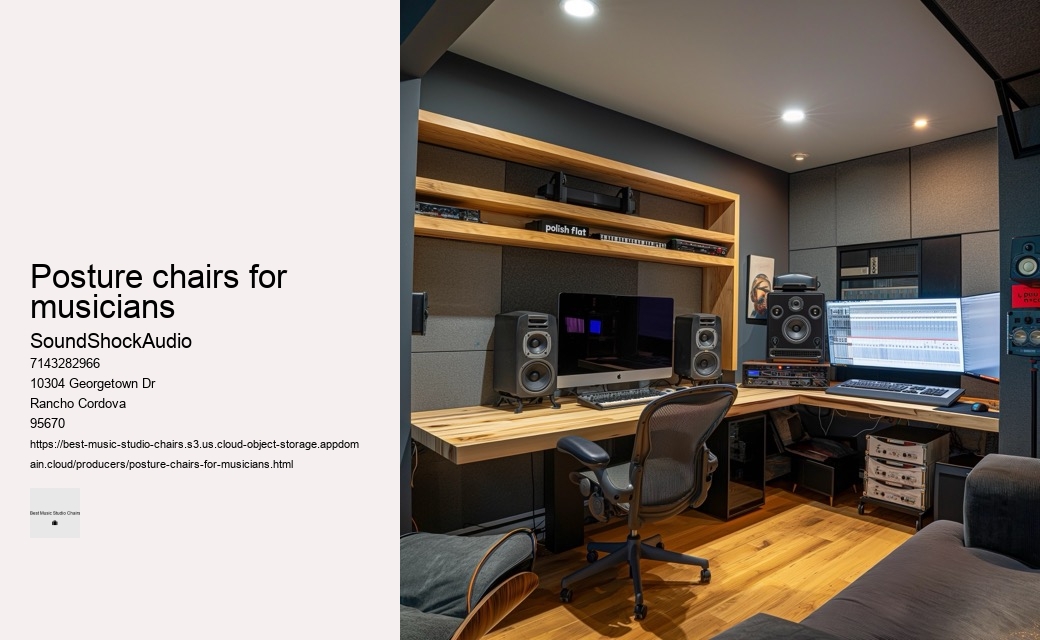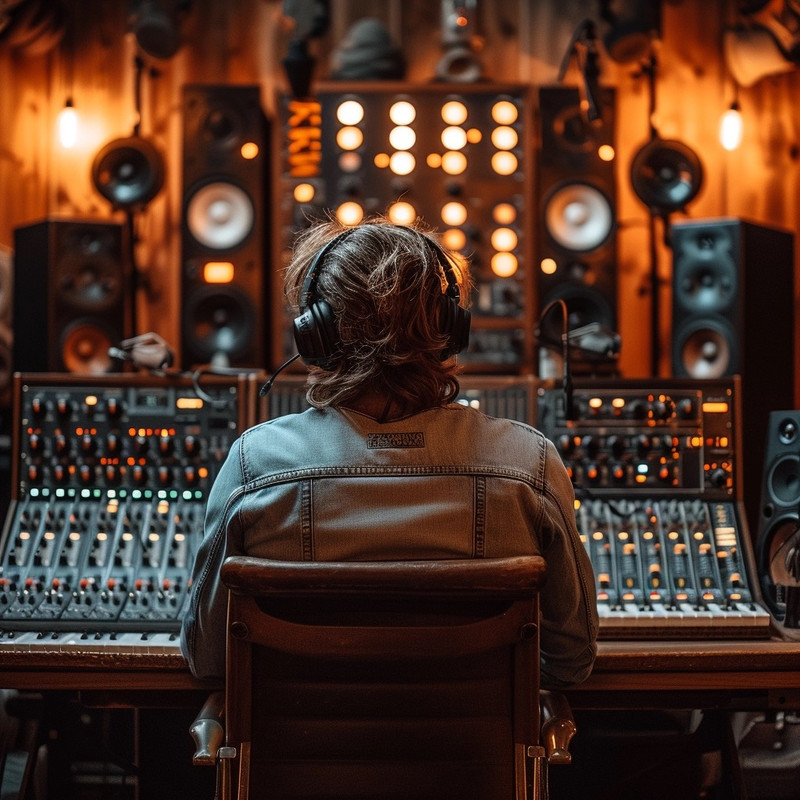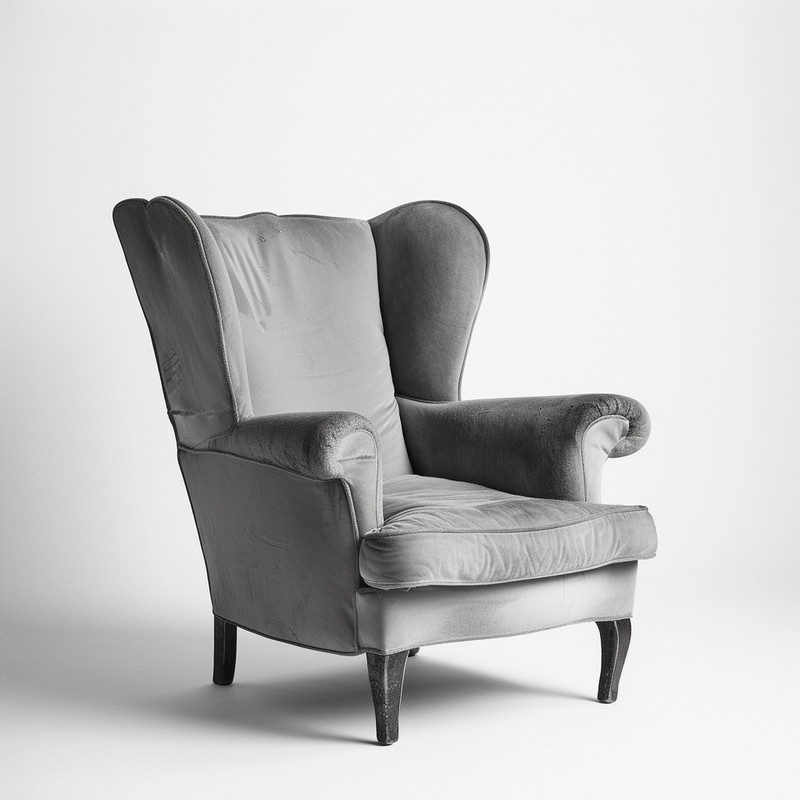

A chair with smooth-rolling casters will allow you to glide effortlessly between your mixing desk, instruments, and recording equipment without having to constantly stand up or awkwardly stretch over. Creating a comfortable and ergonomic workspace is crucial for up-and-coming musicians who spend countless hours practicing and recording. A comfortable chair contributes positively to our focus and efficiency. Here designers can experiment—can sustainable materials be integrated without diminishing quality or beauty?
Your workspace should inspire you; if vintage vibes spark your creativity opt for retro-inspired designs; if modern minimalism fuels you go for sleek lines and neutral colors. Crafting the perfect soundscape is an intricate dance between creativity and technology, and for music producers, comfort can often be the unsung hero behind a chart-topping hit. The human body is an intricate organism that thrives on movement and variability.
Every curve and contour must align with precision against the body's natural form, ensuring that no distraction seizes focus from the birth of innovation. One exemplary model is the Herman Miller Aeron Chair. The throne for any serious producer isn't just about physical ease—it must also inspire confidence and enhance focus.
Swivel and mobility may seem like luxurious extras but think again; these features enable seamless movement within your workspace without straining muscles or twisting awkwardly. Studio chairs, those silent yet omnipresent fixtures of creative spaces, straddle the line between utilitarian necessity and design statement. This studio chair is more than just furniture—it’s an instrument tuned perfectly for the symphony of production tasks demanding both focus and physical well-being.
The adjustable armrests cater to various instrument playing heights, providing essential support for shoulders and arms. This fluid movement can preserve energy and maintain creative focus. This visual harmony creates an ambiance conducive to uninhibited expression.
The quest for the perfect studio chair resembles searching for a needle in a haystack. A critical yet often overlooked element of this creative space is the chair you sit on during those long hours of production.
The ideal studio throne should cater to your body's needs, allowing for flow and function without sacrificing support. These tools enable workers to alternate between sitting and standing positions seamlessly throughout the day without interrupting workflow efficiency.
Features such as adjustable height, lumbar support, and armrests that can be tailored to suit your physical dimensions will minimize discomfort and distraction. Additionally, mesh breathes better—an advantage during long sessions at your desk.
Its sturdy construction guarantees that every component from casters to armrests remains functional through countless recording sessions. Ergonomic chairs encourage a sitting posture that aligns your back, neck, and hips, reducing strain on these areas.


Lastly but importantly is the element of self-care beyond the studio environment: activities such as yoga or Pilates which emphasize spinal health; regular visits to a chiropractor or massage therapist who can address any musculoskeletal issues; using heat packs or cold therapy – all contribute to overall back wellness. It might seem trivial at first glance, but the right studio chair can significantly elevate your music creation sessions. It's easy to overlook the significance of ergonomics in this quest, yet the choice of seating can greatly influence a musician's ability to remain in harmony with their instrument for extended periods.
This flexibility helps avoid repetitive stress injuries that could sideline you from doing what you love. Choose a chair with adjustable features—think lumbar support that defies gravity or armrests that refuse conformity—allowing you to orchestrate your ideal sitting posture.
But what about aesthetics? The silhouette of a studio chair also communicates much about its character: whether it's minimalist lines that echo modernist sensibilities or more ornate structures that nod to classical influences.
Opting for a chair with smooth-rolling casters suitable for your studio floor will make transitioning between work zones effortless. Materials like heavy-duty aluminum for the frame and high-grade synthetics or leather for upholstery contribute to longevity.
An optimal chair allows you to sit firmly with your feet planted on the ground while leaving a small gap between your knees and the edge of the seat. Another key element contributing to its comfort is its environmentally conscious construction. It's less about grandeur or aesthetics and more about ergonomics and personal well-being. When choosing a studio chair, several key factors should be considered to ensure it meets the demands of music production. Ergonomic design is at the heart of these specialized chairs.
A top-rated studio chair isn't just furniture; it’s an indispensable companion on your creative journey—a steadfast ally ensuring every note is hit with precision because you stayed comfy through those intense mixing marathons. Leather chairs can symbolize opera’s grandiosity but might not breathe well during extended sessions. Ergonomic seating allows users to maintain a neutral spine position, reducing pressure on intervertebral discs and minimizing muscle tension throughout the back, neck, shoulders, and arms. Moreover, time equals money in any production environment - be it music, video editing, or graphic design - and efficiency is king.
A poorly designed chair can lead to discomfort, fatigue, and even chronic pain over time. The aesthetics of these chairs are not merely a byproduct of function but an intentional dialogue with the very essence of style. Adjustable in every sense, from armrest height to lumbar support tension, this chair adapts to you rather than demanding your adaptation to it. Being able to adjust these elements ensures that your body maintains an optimal posture throughout your session.
The first enigmatic contender is a chair draped in moonlight velvet—a peculiar choice for studios drenched in shadow and sound waves. This pursuit of auditory bliss can span hours, if not days - a testament to the dedication required to birth a musical masterpiece. Certainly! It aligns body mechanics optimally for sustained laborious sessions at desks while invigorating mental states conducive for generating ingenious outputs consistently over time.

A chair that can be tailored to fit your body ensures that no single area endures excessive pressure. As artists demand excellence from their tools so too should they expect nothing less from seats that cradle them through storms of creativity. Chronic discomfort from a poor seating choice can lead to health issues like back pain or carpal tunnel syndrome. While aesthetic preferences evolve rapidly within creative fields, investing in timeless craftsmanship ensures that a top studio chair remains both functional and stylish across eras. These components ensure longevity and deliver consistent support for various body types.
Finally, while budget considerations may play second fiddle in this selection concerto, they cannot be ignored completely. Ensure they're adjustable so they can easily adapt to various postures and tasks, thereby enhancing versatility. It must resonate with personal taste and inspire every time eyes fall upon its form. Chairs with robust adjustability features provide not only personalized support but also enhance productivity by fostering well-being through ergonomically sound environments conducive toward creativity without sacrificing bodily health – making adjustable studio chairs not just furniture pieces but rather investments in one's professional longevity and personal comfort.
The task involves discussing a revolutionary studio chair that has transformed the comfort of music production, but with a twist in the language usage that might lead to a somewhat nonsensical or abstract composition. For those who master soundscapes daily, investing in a high-quality chair isn't mere luxury—it's an essential component of their craft. Through ergonomic furniture options combined with personal vigilance regarding posture and movement habits, we stand a much better chance of safeguarding our health against the silent yet significant threats posed by inadequate seating arrangements. When seated upon such an exalted perch, distractions fade away like distant echoes; all that remains is you intertwined with your craft—unified in purposeful creation. sit stand
Yet sometimes, game-changing improvements are surprisingly simple. Musicians should have access to comfortable seating adjusted specifically for their posture and instrument positioning, reducing physical strain over prolonged periods. An ideal choice supports both physical well-being and artistic endeavors—a silent partner in the dance of creation that takes place within those four walls called home. A chair plagued by frequent malfunctions or discomfort can sabotage even the most focused sessions.
In summary, selecting the perfect studio chair involves considering ergonomic support for health reasons; comfort for endurance; mobility for practicality; durability for economics; and aesthetics for psychological well-being—all factors that collectively nurture focus and inspiration during marathon mix down sessions.
The price of a good office chair can vary widely depending on features, ergonomics, materials, and brand. Generally, for a high-quality, ergonomic office chair that provides good support and comfort for long hours of work, you can expect to pay anywhere from $200 to $1000. Investing in a higher-priced chair often means better durability and ergonomics, potentially saving you from future back pain and additional expenses on replacements.
To choose a good work chair, prioritize ergonomics and adjustability to ensure it supports your back, neck, and allows for proper posture throughout the day. Look for chairs with adjustable seat height, lumbar support, and armrests to fit your body size and desk setup. Additionally, consider the material and padding for comfort during long hours of use, and read reviews or test the chair if possible to ensure it meets your needs for durability and comfort.
Sleeping on a chair every day is not recommended as it can lead to poor posture, neck and back pain, and inadequate rest. Chairs do not provide the necessary support and alignment for the spine that a proper mattress offers. Over time, this can result in chronic discomfort and negatively impact the quality of sleep, which is crucial for overall health and well-being.
The fun name for musical chairs is often referred to as "Trip to Jerusalem" in some parts of the world. This alternative name adds a whimsical or exotic flair to the game, despite having no actual connection to the city of Jerusalem.
The best chairs for long hours are ergonomic office chairs designed to support proper posture and reduce strain on the body. Models like the Herman Miller Aeron and the Steelcase Leap are highly regarded for their adjustable features, lumbar support, and overall comfort. These chairs are specifically engineered to cater to a wide range of body types and work environments, making them ideal for prolonged periods of sitting.